














Dear Friends
Hello from the Isle of Man, where we have had a really bad week of April downpours rather than showers!
I went up to Ramsey yesterday, all along the west coast from Peel there are large ponds new for spring 2024! Today I read that Douglas Promenade is awash with storm debris so the Horse Trams are not in operation.
More positive on the new issues scene! We have Bees to brighten your day in celebration of the 150th anniversary of the British Beekeepers Association, of which the Isle of Man Beekeepers are members. We would like to express our sincere thanks for their most generous support.
Nicola Dixon’s Traditional Peel Boats are perfect for calmer waters. There is nothing better than a day in Peel by the working pier watching the world go by enjoying a Manx Kipper Bap.
2024 is the 80th Anniversary of Allied Troops landing in occupied Europe, a huge logistical operation that required the utmost secrecy, precision and bravery. We have captured the stories
of D-Day and Operation Market Garden through our special two part issue The Road to Liberation – WW2.
Last but not least, Aviation Anniversaries. Only this morning I watched a YouTube video of a Dreamliner attempting to land at Heathrow in Storm Kathleen.
We are pleased to represent the Red Arrows on a stamp during their 60th anniversary year and look forward to welcoming them to our skies during TT week.
Enjoy and all good wishes

Maxine and all the team at Stamps & Coins


OUR COLLEAGUE AND FRIEND PAUL FORD – RETIRES AFTER A REMARKABLE ALBUM OF ACHIEVEMENT
In February my colleague of 29 years Paul Ford decided to hang up his perforation gauge and magnifying glass to retire. Paul will pursue his many personal interests including having more time to work on his own artwork and to champion Manx arts, for which his passion and dedication has been boundless during his career in Isle of Man Stamps & Coins.
When you open your envelope containing our new issues, in some shape or form Paul will have had your needs at the very heart of all we do. As with most things in life, compromises have to be considered but with his eye for detail and overriding starting point, to add value to the experience of collecting Manx stamps and retain integrity, he has always spoken up for you, the collector.
Paul has exacting standards and would always use his own artistic background to influence our issue programmes, putting Isle of Man stamps on the international stage. Paul would be the first to say the agencies and designers are as important as the direction he provides.
When retirement comes on the 24th May there will be an album of achievement which many in our industry will recognise as making Isle of Man stamps highly respected worldwide.
We wish Paul every happiness in his new pursuits. It is truly well deserved.

The Isle of Man Post Office very much regrets that the entire supply of ‘The Life of Bees’ issue in sheets with normal gum has been printed with the Royal cypher omitted: the error affects all six values.
Isle of Man Stamps & Coins apologies for this very unfortunate error which was first noticed on issue day, 12th April 2024 with many customers already supplied with their stock.
We have checked against UPU regulations and can confirm that the stamps in question conform and are therefore valid for postage purposes. We would like to express our sincere apologies to the Office of the Private Secretary to H M King Charles III Lord of Man for the omission, and reassure our Collectors that measures have been put in place to tighten up our proofing and stock preparation processes. The error does not affect the self-adhesive version of the stamps printed as a sheetlet which was produced by a different process.
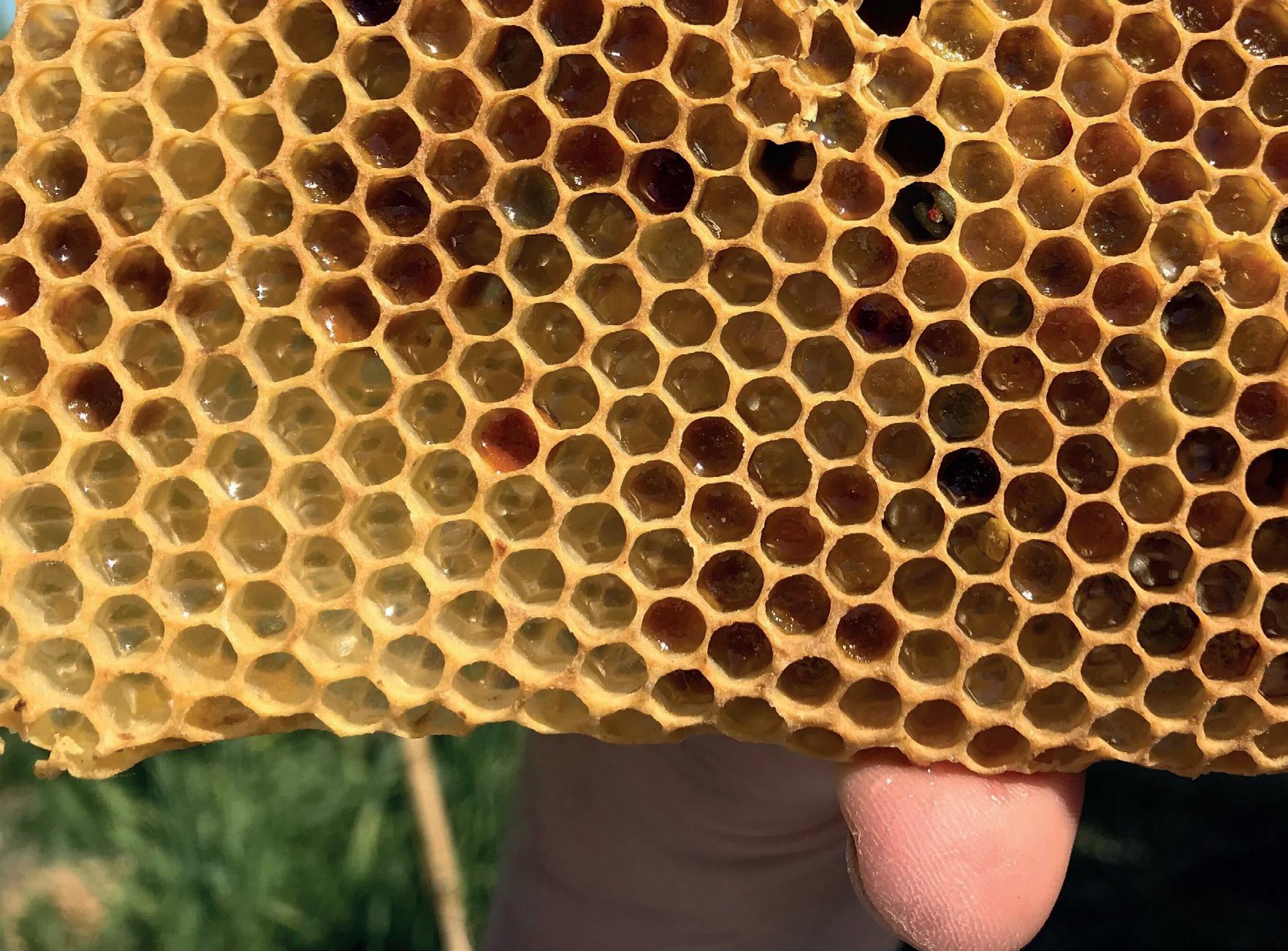
Philatelic products had already been prepared using stamps with the error: these will remain on sale until stocks are exhausted or the planned withdrawal date of the 31st December 2024 is reached.
Customers who have received the incorrect stamps may, if they wish, return these for a full refund.
Standing order customers, who have yet to receive their requirements, will receive the stamps with the error of no Royal cypher around 28th May 2024 in line with their standing order requirements and all other issues released during April and May 2024.
All 2024 Year Collections will include the stamps as issued on the 12th April in gummed form.
Once again we would like to apologise for any inconvenience or upset we may inadvertently have caused to our collectors.
Maxine Cannon, 25th April 2024
We are delighted to feature as one of ten worldwide postal administrations featured in Linn’s Stamp News 2024’s Most Influential Companies in Philately.
Thanks from all of the team at Isle of Man Post Office goes to all of our loyal customers for their continued support throughout the previous 50+ years.
Discover more on this story through the special edition copy supplied alongside the March 2024 edition of Scott Stamp Monthly.
The Maurice Gibb stamp collection takes to the Bee Gees star at 6856 Hollywood Boulevard on the world famous Hollywood Walk of Fame. Proudly displayed by music photographer Guido Karp, whose images are used throughout the issue.
Guido commented: “I loved working with them and we had a real bond. Their kindness and music made a huge impression on me. I captured my last photo with the band in 2001. Losing Maurice was such a blow to the world. The Bee Gees hold a special place for me both professionally and personally. Maurice’s untimely death in 2003 left behind a legacy of much loved music and memories and I am honoured to see my images reproduced in this postal tribute.”


In this 150th anniversary year of the British Beekeepers Association, Isle of Man Post Office is delighted to present a set of six stamps celebrating the life of bees.
Harry Owens writes
The bees in the Isle of Man are unique for several reasons. First, they are genetically very close (in the region of 90 to 95%) to the native European dark bee, Apis mellifera mellifera. Second, the Island is free of the dreaded Varroa parasite; we gained EU Status in 2014 as being Varroa Free and fortunately, we are free of other major bee diseases. Third, our bees on the Isle of Man are protected by an Act of Parliament; the Bee Disease Act 1987 (and subsequent updates) prevents the importation of any type of bees and any second-hand beekeeping equipment; the fine for contravening this act is up to £10,000. This makes the Isle of Man a most valuable reservoir of disease-free and pest-free bees and a resource for supporting populations elsewhere in the British Isles.
Our island is fortunate in having three active Beekeeping Associations the Northern, Western and Southern combining in the Isle of Man Beekeeping Federation; the Associations take an active part in training and helping new and old beekeepers in the art of keeping bees. We are glad that through education and adherence to the Act, beekeeping here is like it was in the days before Varroa came on the scene. We are extremely fortunate that our Island Government gives support and help with all aspects of beekeeping, maintaining a proud and thriving local industry that produces (of course) the best honey in the world.
Stamp 1: Worker Bee Fertilised eggs laid by the queen bee become worker bees, the vast majority of the hive population. Worker bees are all female; they do all the work in the hive; in their six-week life they clean the hive, raise brood, feed and care for the queen, ventilate the hive, make wax comb, guard the hive, and then in their final three weeks they leave the hive to collect nectar and pollen. In the winter, longer-lived worker bees cluster around the queen, keeping her alive until spring.

Stamp 2: Drone Bee Drone bees are male, and they come from unfertilised eggs. A drone’s sole purpose is to mate with a queen during her mating flight; when he is successful, it is his last act, he falls to the ground dead. Drones are fed by worker bees and at the end of summer when the mating season is over, he and his brothers are all ejected from the hive.
Stamp 3: Queen Bee The lone queen’s role is to lay up to 2,000 eggs a day. She is fed and groomed by the worker bees and is queen in name only, with her fate decided by the colony. Queens develop from fertilised eggs laid by the previous queen in special cells; the larva is fed royal jelly, causing her to grow larger. A single mating flight is enough to fertilise every egg she will lay in her lifetime.
Stamp 4: Pollination Bees collect high protein pollen to feed to developing larvae. From the earliest days of spring worker bees collect pollen, packing it into the pollen baskets on their legs. Bees fertilise many of the plants and trees that give us food; along with other crucial pollinators they are responsible for much of the biodiversity we see around us. Farmers encourage local beekeepers to place hives on their farms to improve pollination rates.
Stamp 5: Honey Bees collect nectar to make honey. Nectar from different flowers produces honey with different flavours, colours, and textures. A hive can produce an excess of up to 50 kg of honey in a good season; and still leave enough for the colony to eat in winter.
Stamp 6: Beekeeper In the wild, bees live in trees and caves; historically, collecting honey meant raiding a wild colony. Over thousands of years beekeepers have developed ways of providing the perfect home for a honeybee colony. Each colony is like an individual being; to reproduce, bees swarm, making new colonies, and through careful management of this behaviour the beekeeper can increase populations, benefitting us all.





Isle of Man Post Office is proud to share this joint collection of two issues studying the Liberation of Europe in World War II, commemorating the eightieth anniversaries of D-Day and Operation Market Garden through ten stamps.
In the dark hours before the beach landings, British paratroopers and glider-borne troops were tasked with securing key objectives behind enemy lines. The British 6th Airborne Division, under the command of Major General Richard Gale, spearheaded this daring mission. Their objectives included capturing vital bridges, securing key crossroads, and disrupting German communication lines.
As the night sky was alive with the parachutes of the British airborne troops, chaos unfolded on the ground. Some units faced severe resistance, while others managed to secure their objectives with relative ease.
The British airborne assault was a double-edged sword; while it achieved success in some areas, it also faced setbacks and casualties.
The glider image is from a film by Norman Clague, a Manx-born member of the No. 5 Army Film and Photographic Unit.
The naval component of Operation Overlord was an awe-inspiring display of Allied strength. The Royal Navy played a pivotal role in assembling and transporting the vast armada across the English Channel. Operation Neptune, the naval phase of Overlord, involved the largest seaborne invasion force in history.
British warships formed an imposing naval barrier to protect the thousands of landing craft. The Royal Navy provided crucial fire support during the beach landings, bombarding German positions to pave the way for the infantry storming the beaches.
The Channel crossing was a perilous journey, as the seas were rough and the weather unpredictable. British sailors faced not only the threat of German U-boats but also the daunting task of safely delivering troops to the designated landing zones.
British forces were assigned two of the five landing beaches: Gold Beach and Sword Beach. The British 50th (Northumbrian) Infantry Division landed on Gold Beach, while the British 3rd Infantry Division was supported by Commandos on Sword Beach.
The landing at Gold Beach faced initial challenges due to strong German resistance, but determined British forces managed to overcome obstacles and push inland. On Sword Beach, the British encountered fierce opposition but successfully captured key objectives, including the pivotal Pegasus Bridge.
The Royal Engineers played a crucial role in the early hours of the invasion, working under intense fire to clear beach obstacles and create pathways for advancing troops. Despite meticulous planning, the chaotic and violent nature of the beach landings resulted in heavy casualties for British forces.
By late August 1944 the Allies had reached the outskirts of Paris. The French Resistance played a crucial role in aiding the Allied forces by conducting acts of sabotage against the German occupiers. As the Allies approached the city, a coordinated uprising took place in Paris, with both the Resistance and citizens fighting against the Germans. On 25th August, 1944, Paris was officially liberated as General Charles de Gaulle, leader of the Free French Forces, led a triumphant march into the city.
The liberation of Paris marked a symbolic and strategic victory. The fall of the French capital dealt a significant blow to German morale and control over Western Europe. It also facilitated the subsequent Allied advance into Germany and the end of the war.


The liberation of Europe during World War II was propelled by pivotal military operations such as D-Day and Operation Market Garden. D-Day, launched on 6th June 1944, saw the Allied forces storm the beaches of Normandy in a massive amphibious assault against Nazi-occupied France. This audacious operation, involving intricate planning and unparalleled coordination, marked a turning point in the war, establishing a crucial foothold on the continent and initiating the liberation of Western Europe.
Operation Market Garden, launched in September
in the Netherlands, allowing Allied forces to advance swiftly into Germany and hasten the end of the war. Despite initial successes, including the capture of several bridges, the operation ultimately fell short of its objectives due to logistical challenges and stiff German resistance.
Both D-Day and Operation Market Garden showcased the Allied forces’ determination, bravery, and ingenuity in the face of formidable opposition. These operations demonstrated the Allied commitment to freeing Europe from Nazi tyranny and restoring peace and democracy to the continent.

COMMEMORATIVE PACK
Prestige Booklet & 2 First Day Covers presented in a folder – saving of over £2.


Intricately designed and informative Prestige Booklet; a 28 page publication containing in-depth text and powerful archival imagery documenting the liberation of Europe and the events of 1944.


Issue Date: 29.04.24
Isle of Man Post Office is proud to present this set of five stamps marking the eightieth year since the brave and imaginative Operation Market Garden, conceived with the aim of hastening the liberation of Europe in the Second World War. We are especially pleased to commemorate the roles played by three notable Manx soldiers in different aspects of the struggle.
Operation Market Garden was a bold Allied military endeavour during World War II, designed to hasten the end of the conflict by securing key bridges and establishing a route into Germany. Spearheaded by British Field Marshal Bernard Montgomery, the operation was ambitious in its scope and aimed to utilise airborne troops to seize a series of bridges in the Netherlands, allowing ground forces to advance rapidly and bypass the heavily fortified Siegfried Line.
The operation commenced on 17th September 1944, with the airborne phase, as thousands of paratroopers and glider-borne troops from the British 1st Airborne Division, the American 82nd and 101st Airborne Divisions, and the Polish 1st Independent Parachute Brigade were dropped near key bridges along the proposed route. The objectives included securing crossings over the Maas, Waal, and Lower Rhine rivers, particularly the critical bridge at Arnhem, which was the furthest point of advance.
Initially, the operation progressed with relative success as airborne units captured several bridges, including those at Eindhoven and Nijmegen. However, significant challenges arose, including unexpected resistance from German forces, communication breakdowns, and logistical issues.
The most significant setback occurred at Arnhem, where the British 1st Airborne Division encountered fierce German resistance. Hindered

by poor intelligence regarding the strength of enemy forces and the inability to reinforce and resupply adequately, the British paratroopers found themselves isolated and overwhelmed. Despite their tenacious defence, they were unable to hold the bridge over the Rhine for the anticipated two days and were eventually forced to withdraw after sustaining heavy casualties.
As the operation progressed, it became increasingly apparent that the Allies had underestimated the strength and determination of German opposition, as well as the logistical challenges of maintaining a narrow corridor over such a significant distance. Furthermore, adverse weather conditions, including rain and fog, impeded aerial resupply efforts, exacerbating supply shortages and hampering the ability to reinforce troops on the ground.
By 25th September Operation Market Garden was officially terminated, marking a strategic failure for the Allies. While some objectives had been achieved, including the liberation of several Dutch towns and the establishment of a foothold in the Netherlands, the operation fell short of its primary goal of creating a swift and decisive route into Germany.
Despite its ultimate failure, Operation Market Garden remains a subject of historical fascination and study, offering valuable lessons about the complexities and challenges of wartime strategy and the human cost of military operations.
Cojeen was a member of a 2-inch mortar team in 12 Platoon, B Company, 1st Battalion The Border Regiment. An attack by German mortars and self-propelled guns destroyed all of their ammunition. In the evacuation, Cojeen acted as one of the guides. He returned to the Island in 1945 and continued work as a plumber.

Robert Henry Cain was born in Shanghai of Manx parents. After going to school at King William’s College in the Isle of Man he returned to England to join the army in 1940. During the Arnhem operation, Major Cain distinguished himself through his exceptional leadership and bravery after his unit became isolated and under constant attack from unexpectedly strong enemy forces. Major Cain’s actions during the battle earned him the Victoria Cross.
Flying Officer John Ernest Clague, 190 Squadron, Royal Air Force Manxman John Clague was a Wireless Operator/Air Gunner with 190 Squadron which was based at RAF Fairford.
On 21st September, on his fourth trip to Arnhem towing gliders, his Stirling aircraft was shot down. Clague was shot and wounded in the foot and arm by a German patrol and consequently taken prisoner. Post war John was demobbed from the R.A.F., returning to his wife and family and his grocery shop in Port Erin.











We wish to thank the family of Norman Clague for their assistance throughout this issue. Every effort has been made to trace or contact all copyright holders. The Isle of Man Post Office will be pleased to make good any omissions or rectify any mistakes brought to their attention at the earliest opportunity. Image Credits: ©IWM BU 1184, BU 1292 & A70 34-5. Imagery Courtesy of the National Army Museum, London and the Manx Aviation and Military Museum
A Prestige Booklet The Liberation of Europe –ADF71 £23.14
B Liberation of Europe Commemorative Pack ADF43 £37.50
C Set (10 stamps - not illustrated) 85p x 2, £1.28 x 2, £1.60 x 3, £1.82, £2.31 x 2 ADF31 £15.50
TECHNICAL DETAILS
Text: ........................................................... Ivor Ramsden MBE
Design: ...............................................Isle of Man Advertising
Printer: .............................................................................. bpost
Process: Offset Lithography
Colours: ............................................................ 4 plus metallic
Paper: Tru White Litho 110g FSC
D First Day Covers (D-Day and Operation Market Garden combined) ADF91 £17.80
E Presentation Packs (D-Day and Operation Market Garden combined) ADF41 £17.70
F Booklet Pane (not illustrated) (D-Day and Operation Market Garden combined stamp sheets) ADF36 £15.50

Perforations: ........................................................
11.5 per 2cm
Stamp Size: ...................................................... 40 x 31.66mm
Format: .................................................................. Sheets of 15
Date of Issue: 29th April 2024
Limited Editions: ......................... Presentation Pack: 1750; First Day Cover: 2750 (per set of packs / covers)
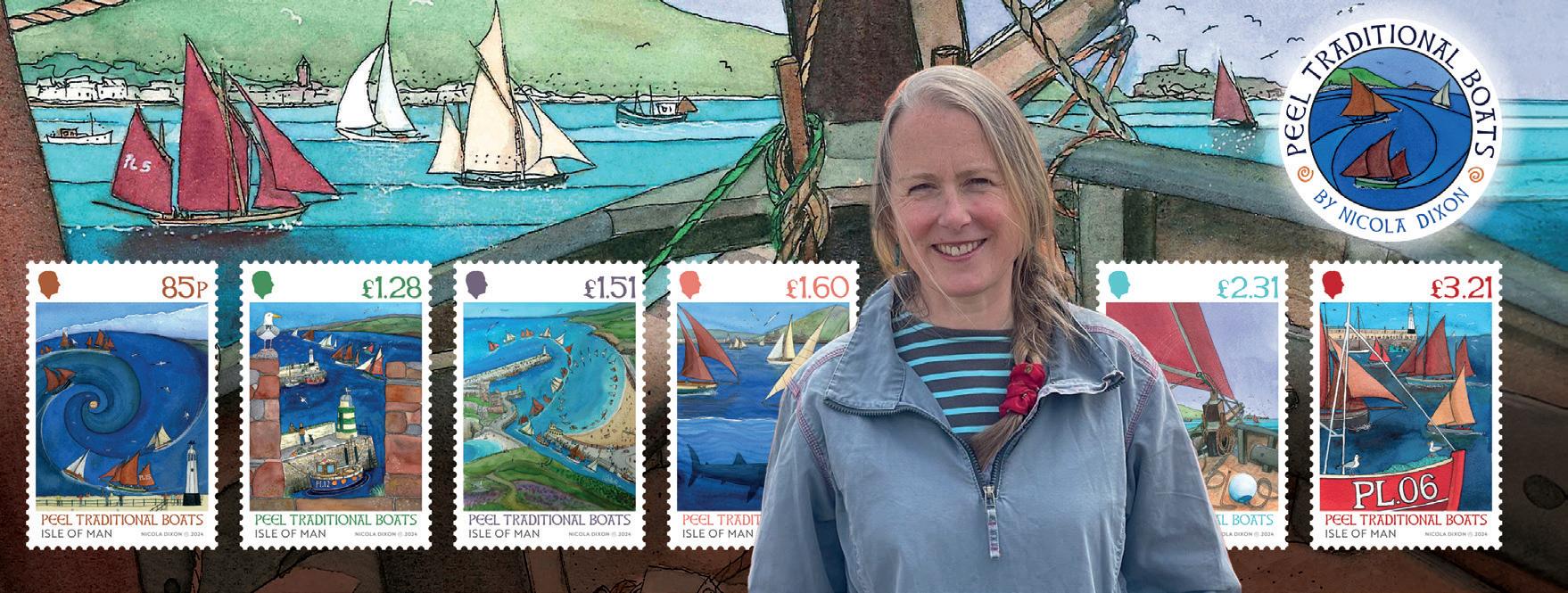
Isle of Man Post Office is delighted to present six stamps to commemorate the Island’s hosting of the Peel Traditional Boat weekends. Spread over about twenty-five years, these joyous occasions have inspired mariners from all corners of the Irish Sea and beyond to share their love and dedication for these beautiful vessels, built and maintained by true nautical craftsmen.
Local artist Nicola Dixon has designed a great many posters and artworks to celebrate these exuberant occasions. Her joyous, colourful and life-affirming work selected for our stamps certainly brings the festival atmosphere to life.
Nicola explains…
It all started when I crewed Mike Clark’s Manx Nobby White Heather (built in Peel in 1904) to a huge sailing event in Brittany, France in 1992. I loved it. The event organisers had requested that every boat decorate a wooden panel as a gift, and this job was given to me as I had some art skills. A later parade of 2000 boats between Breton ports inspired some onboard sketches and I was hooked. It opened doors to another world and I was in the thick of it for the next fifteen years. Opportunities arose to crew beautiful working boats and classic yachts in the UK and Europe. I helped cover costs by making unique badges, earrings and cufflinks on carved and painted wood featuring these colourful boats. Some small watercolour paintings were exhibited at the International Wooden Boat Show at Greenwich and things changed gear. Interesting exhibition and event opportunities in the UK and beyond followed.
I was travelling a lot, participating as crew and creating artwork for maritime events and projects in America, Holland, Mediterranean and the Caribbean. All sorts of opportunities came my way, notably an historic commission for the highprofile America’s Cup Jubilee in 2001. A print of which now hangs in the Royal Yacht Squadron in Cowes, and was taken on tour by Louis Vuitton following an event at in Newport Rhode Island, where I had also had a solo exhibition at the Museum of Yachting.
However, the Peel Traditional Boat Weekend was my home event. Many friends were involved as organisers and helpers, others visited with their boats, and lasting friendships were made. It was
great fun. The 90s were the heydays of traditional boat events, as there was a resurgence in restorations, and these gatherings of enthusiasts was a new and exciting thing. There was a growing circuit of events with harbours full of maritime colour and beauty in the Irish Sea, and beyond, and every four years small fleets gathered for forays to huge events in Brittany.
To help the Peel weekend I drew simple line images for event t-shirts. They became very recognisable and collectable. After a few years I realised that if I water-coloured the images they could double as event posters. I felt that they were a gift to the sailing world for all the good times! They were popular and six of these images have become stamps, while a stitched emblem is now a postmark and key image design.
Often the paintings featured visiting boats and were completed last minute, in order to have an idea who was intending to take part that year. The original watercolours were sometimes auctioned at the fun-fuelled festival. The PL09 framed artwork was found wrapped up in the toilets on the breakwater after a traditionally late night, the owner long departed for Bangor! Luckily it was handed in, and taken across the Irish Sea on another boat. Peel remains a popular haven for these beautiful old vessels and the traditional boat enthusiasts and there is always fun and camaraderie amongst the sailing fraternity.
The Boats
So many beautiful boats visited Peel over the years from the Island, the Irish Sea area and beyond. Many featured in my designs. There were Liverpool Nobbys, Morcambe Bay Nobbys, Bristol Channel Pilot Cutters, Cornish Crabbers, Scottish Zulus, converted fishing boats and RNLI lifeboats, Castletown One Designs, Mersey racing boats and Vilma a Danish top sail schooner. HMS Rose a square rigger visited from America, and The Peel Castle visited from Ireland.
The stout Galway Hookers were always popular, the Naomh Cronan, built in Dublin as a community project in the 90s, was a frequent visitor and features often. Another favourite was classic yacht Espanola (built in 1902), seen on the £1.60 stamp. I was on board when the owner Martin Birch was handed a plastic bag containing a silver trophy that Espanola had won racing in Ireland in the first half of the century. It then had pride of place and was used to hold Maltesers!
Local boat Master Frank is a Sailing Longliner, built in Ramsey in 1895 and lovingly restored in the 90s by Joe Pennington. Fisher Lass, Port St Mary built Manx Half-Decker was restored by the late Mike Craine. Mike did a lot for the Fisherman’s Mission and founded the 40+ Fishing Boat Association. Margaret was built in Ramsey in the 1930s and famous for formerly being owned by one-time Manx resident and jazz pianist Ronnie Aldrich.
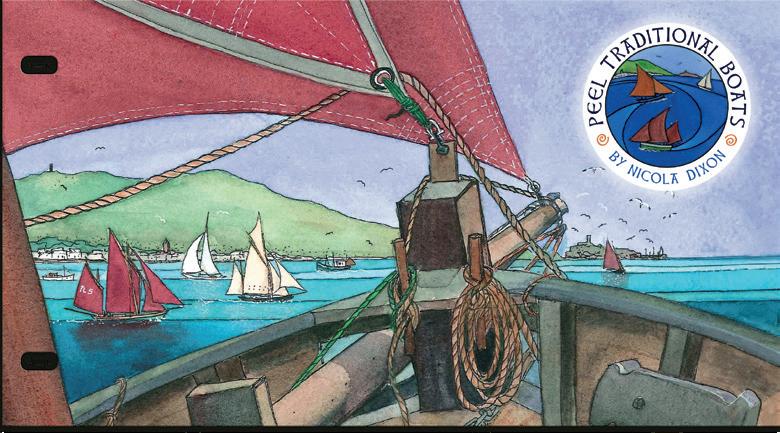

There are so many stories with each boat. Notably, for me, Peel Nobby Gladys PL 61 is a favourite. Built in 1901 for the family of my primary school headmaster Tom Cashin, and somehow I knew about her from him. Gladys’ lines were documented in Edgar J March’s famous book on Herring Luggers, and she is on the National Historic Ships Register. Her story was tragic for a while…she was rescued but rotting in a friend’s garden near Galway for a few years. The owner died at sea and then his widow sold her to a sailing couple who made her seaworthy again. She returned to the Boat Weekend in 2008 and there was great excitement among those families who had fishing connections with her. Her foredeck featured in the PL09 design. Later she was sold to Charlotte Whyte from Cornwall, who grew up living on boats. A wonderful restoration followed and Charlotte now lives on board and takes her racing with the lugger fleets. I was thrilled and a bit emotional to have the opportunity to take the helm.
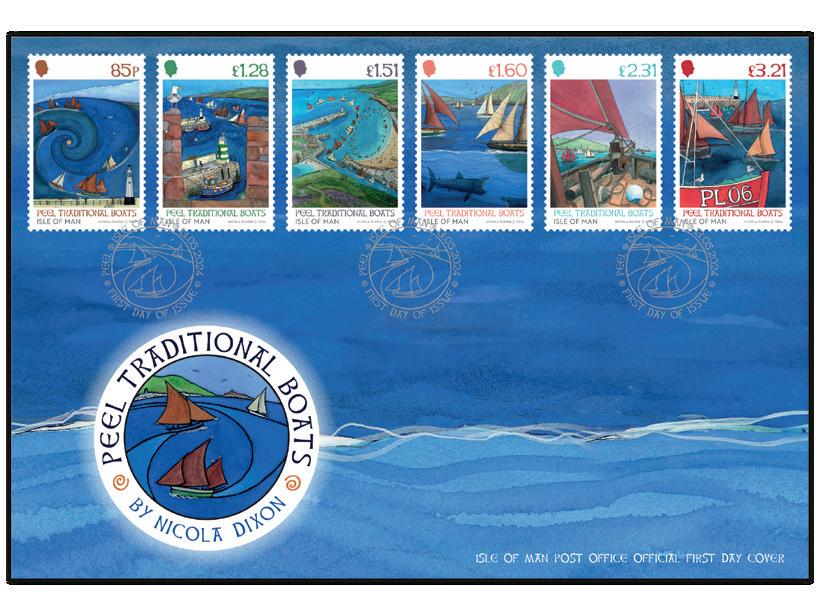

Issue date: 28.05.24
Since 1924, Britain has played a pivotal role in global aviation, marked by many notable achievements and innovations as celebrated throughout this set. Isle of Man Post Office is delighted to issue this collection of stamps highlighting six landmark British aviation anniversaries and milestones.
100th Anniversary Imperial Airways
Formed on 31st March 1924 Imperial Airways - following the merger of The Daimler Airway, Handley Page Transport, Instone Air Line and British Marine Air Navigation Company - was to become the leading British airline of the interwar years. Opening its first scheduled service flying from London (Croydon) to Paris (Le Bourget) on 26th April 1924, it was to pioneer the development of air mail and passenger routes across Africa, Middle East, India, Hong Kong and Australia.
100th Anniversary of the Fleet Air Arm
Formed on 1st April 1924 as the Fleet Air Arm of the Royal Air Force specifically to provide aircrew for aircraft carriers / ships, the Air Ministry retained supervisory responsibility for the provision of aircraft for the naval air arm until the late 1930s when it was placed under the full control of the Admiralty. At the outbreak of WW2, despite its fledgling fleet being small in number and outdated in design, the outstanding naval aircraft of the war was the rugged Fairey Swordfish biplane, constructed by Fairey.
75th Anniversary of English Electric Canberra
First flown as the A.1 prototype VN799 at Warton on 13th May 1949 piloted by Rolan P. Beamont, the Canberra was to enter squadron service in May 1951 as the first RAF jet bomber. Through numerous modifications and upgrades the Canberra was to remain in RAF service for over 45 years, its large wing area allowing for outstanding highaltitude performance which made it particularly useful for photo reconnaissance. Christened on 19th January 1951 by the Australian Prime Minister Robert Menzies (and originally planned to be built in Australia). A Canberra B.2 WD932 flown by Beamont became the first jet aircraft to accomplish a non-stop unrefuelled transatlantic flight on 21st February 1951.
A development of the Avro Lancaster and the later Avro 694 Lincoln, the Shackleton (named after the polar explorer) was first flown as the prototype VW126 at Woodford on 9th March 1949 piloted by Jimmy H. Orrell. Entering service with the RAF in April 1951, it was to serve for over 40 years, its adaptability allowing the multirole aircraft to be used in anti-submarine warfare, long-range maritime patrol and reconnaissance, colonial policing, troop transport, bomber and search and rescue operations.
75th Anniversary of de Havilland Comet Destined to become the world’s first commercial jet airliner, the prototype the de Havilland D.H.106 Comet G-ALVG piloted by John Cunningham first flew at Hatfield on 27th July 1949. With no visible engines or propellers in its elegant design, it entered scheduled service on 2nd May 1952, however subsequent catastrophic accidents due to unforeseen structural fatigue in the highlypressurised cabin ultimately led to its certificate of airworthiness being withdrawn on 9th April 1954. On 4th October 1958 the redesigned Comet 4 operated by BOAC inaugurated the first transatlantic passenger jet service.
60 Seasons Red Arrows
In 1964 the RAF amalgamated its squadron display teams (which had included in the early years of the 1960s the Blue Diamonds, Red Pelicans, The Tigers and Yellowjacks) into one premier Royal Air Force Aerobatic Team - the Red Arrows - which operating the Folland Gnat aircraft first displayed for the press at RAF Little Rissington on 6th May 1965 and for the public at the Biggin Hill Air Fair on 15th May 1965.




In 1968 its display team permanently increased to nine aircraft with the ‘Diamond Nine’ becoming the Red Arrows’ trademark formation. From the 1980 season the Gnat was replaced by the BAE Systems Hawk, a modified version of the RAF’s fast jet trainer. Today the Red Arrows are very much the public face of the RAF, their eye-catching displays supporting both air shows, trade missions and state occasions, often performing to thousands of onlookers during the Isle of Man TT Festival.

(0) 1624 698430
A Set 85p, £1.60 x 2, £2.31 x 2, £2.72 (not illustrated) ADH31 £11.39 B Presentation Pack ADH41 £12.49 C First Day Cover ADH91 £12.54
TECHNICAL SPECIFICATIONS
Text: .................................................................................. Brian Riddle
Images: Mary Evans Picture Library
Design: Glazier Design
Printer: .......................................................................................... bpost
Process: ........................................................... Offset Lithography
Colours: 4 Paper: ........................................ 413 Tru White Litho 110g FSC
Perforations: .............................................................. 11.5 per 2cm
Stamp Size: 40mm x 31.66mm
Format: Sheets of 20
Date of Issue: ..........................................................28th May 2024
Limited Editions: .............................. Presentation Pack: 1500 First Day Cover: 2500
Aviation Anniversaries
Set 85p, £1.60 x 2, £2.31 x 2, £2.72
Presentation Pack
Issue date 28.05.24
ADH31 - £11.39
ADH41 - £12.49
First Day Cover - ADH91 £12.54
Peel Traditional Boats By Nicola Dixon Issue date 13.05.24
Set 85p, £1.28, £1.51, £1.60, £2.31 & £3.21
Presentation Pack
ADG31 - £10.76
ADG41 - £11.86
First Day Cover - ADG91 £11.91
The Liberation of Europe – WW2 Issue date 29.04.24
Set (10 stamps) 85p x 2, £1.28 x 2, £1.60 x 3, £1.82, £2.31 x 2
Liberation of Europe Commemorative Pack
ADF31 - £15.50
Prestige Booklet and 2 First Day Covers - ADF43 £37.50
Presentation Packs (D-Day and Operation Market Garden combined)
ADF41 - £17.70
First Day Covers (D-Day and Operation Market Garden combined) - ADF91 £17.80
Prestige Booklet The Liberation of Europe
Booklet Pane
(D-Day and Operation Market Garden combined stamp sheets)
ADF71 - £23.14
ADF36 - £15.50
The Life of Bees Issue date 12.04.24
Set 85p, £1.28, £1.60 x 2, £2.31 & £3.21
Presentation Pack
ADE31 - £10.85
ADE41 - £11.95
First Day Cover - ADE91 £12.00
BBKA 150 Years (Self-Adhesive Sheet in folder)
ADE30 - £20.00
BBKA 150th Anniversary Collection (Self-Adhesive Sheetlet and FDC in folder) - ADE43 £30.00
Standing Order Dispatch Date: 07.03.24





MINT CTO PRICE
Marine Mosaics by Kimmy McHarrie Issue date 07.03.24
Set 85p, £1.28, £1.51, £1.82, £2.31, £2.72
ADD31 ADD81 £10.49
Presentation Pack ADD41 - £11.59
First Day Cover - ADD91 £11.64
Sheet Set ADD66 ADD67 £104.90
Europa Sheetlet (10 x £1.28 Europa stamp)
Europa First Day Cover
ADD68 ADD69 £12.80
ADD95 - £7.50
Maurice Gibb Issue date 29.02.24
Set 85p x 4, £1.28 x 3 & £2.72
Presentation Pack

ADC31 ADC81 £9.96
ADC41 - £11.11
First Day Cover - ADC91 £11.06
Sheet Set (8 x sheets of 20)
ADC66 ADC67 £199.20
Sheetlet ADC64 ADC65 £9.96
Limited Edition Imperforate Sheetlet (edition of 1,000)
Collectors Pack
Self Adhesive Set
ADC68 - £17.50
ADC43 - £29.95
ADC32 ADC82 £9.96
Self-adhesive First Day Cover - ADC94 £11.06
The Chinese Year of the Dragon Issue date 22.01.24
Set £1.00, £2.50, £3.25, £3.50
Presentation Pack
ADB31 ADB81 £10.25
ADB41 - £11.40
First Day Cover - ADB91 £11.35
Sheet Set ADB66 ADB67 £205.00
RNLI200 Issue date 04.01.24
Set 1st, £1, £1.50, £1.75, £2.00, £3.50
Presentation Pack
ADA31 ADA81 £10.55
ADA41 - £11.70
First Day Cover - ADA91 £11.65
Sheet Set
Prestige Booklet
Booklet Pane
Self-Adhesive Booklet (10 x 85p)
ADA66 ADA67 £105.50
ADA71 ADA72 £21.10
ADA36 ADA37 £10.55
ADA74 ADA75 £8.50
RNLI200 Supporters Pack - ADA50 £29.95
RNLI200 Limited Edition Stamp & Coin Pack - ADA42 £24.99
RNLI200 Limited Edition Coin Pack - ADA40 £14.99
RNLI200 British Islands Collection / Booklets
RNLI200 British Islands Collection / Presentation Packs
ADA73 - £80.00
ADA43 - £32.50
RNLI200 British Islands Collection / Covers - ADA92 £33.00




The Coronation of HM King Charles III and HM Queen Camilla - Long Live the King!
Set £1.28p x 4, £1.82 x 3 plus 1 label
Presentation Pack
Issue date 14.11.23
ACK31 ACK81 £10.58
ACK41 - £11.33
First Day Cover - ACK91 £11.28
Sheet Set
ACK66 ACK67 £52.90
Back to the Moon Issue date 06.11.23
Set 80p x 3, £1.28 x 3, £1.51, £2.31
ACM31 ACM81 £10.06
Presentation Pack ACM41 - £10.81
First Day Cover - ACM91 £10.76
Sheet Set ACM66 ACM67 £108.60
Sheetlet ACM64 - £17.00
Manx Winter Wildlife by Rowan Corlett
Set 80p, £1.00, £1.28, £1.51, £2.31, £2.72
Issue date 26.10.23
ACN31 ACN81 £9.62
Presentation Pack ACN41 £10.37
First Day Cover - ACN91 £10.32
Sheet Set ACN66 ACN67 £192.40
Self-Adhesive Set ACN32 ACN82 £4.80
Self-Adhesive First Day Cover - ACN94 £8.50
Self-Adhesive Sheet of 24 ACN35 £19.20
Birds of Prey
Set 80p, £1.28 x2, £1.51, £2.31, £2.72
Issue date 01.09.23
ACL31 ACL81 £9.90
Presentation Pack ACL41 £10.65
First Day Cover ACL91 £10.60
Sheet Set ACL66 ACL67 £198.00
Selection of signed framed stamp prints ACL20-25 - £27.50
Standing Order Dispatch Date: 17.07.23
Isle of Man Post Office 50th Anniversary
Set 80p, £1.28, £1.51 x 2, £2.31 x 2 + £1.28 (Europa)
Issue date 05.07.23
ACJ31 ACJ81 £11.00
Presentation Pack ACJ41 - £11.75
First Day Cover - ACJ91 £11.70
Sheet Set ACJ66 ACJ67 £66.00
Europa Cover - ACJ95 £6.50
Europa Sheetlet
ACJ62 ACJ63 £7.68
Special Edition of 50 Collectors Printers Pane ACJ43 - £100.00
Prestige Booklet
Booklet Pane
ACJ71 ACJ72 £22.00
ACJ36 ACJ37 £11.00
PO50 Collectors Sheetlet (Free to standing order customers) ACJ64 - £8.88
150th Anniversary of the Isle of Man Steam Railway Issue date 25.05.23
Set 80p, 2 x £1.28, £1.51, £2.31, £2.72
ACI31 ACI81 £10.26
Presentation Pack ACI41 - £11.01
First Day Cover - ACI91 £10.96
Sheet Set ACI66 ACI67 £102.60
Standing Order Dispatch Date: 15.05.23
Accession Collection
(Special 6th May Sheetlet & Cover with stamps in folder)
HM King Charles III and HM Queen Consort Camilla (Set of 8 only)
Portraits of King Charles III (Set of 4 only)
HM King Charles III and HM Queen Consort Camilla
Presentation Pack
Portraits of King Charles III Presentation Pack
HM King Charles III and HM Queen Consort Camilla
ACO43 - £39.99
AC020 - £10.48
ACO21 - £5.12
ACO40 - £11.23
ACO42 - £5.87
First Day Cover - ACO92 £11.18
Portraits of King Charles III First Day Cover - ACO94 £5.82
Coronation Day Commemorative Sheet
The Accession of HM King Charles III and Queen Consort Camilla Coronation Collection
ACO64 - £22.50
ACO43 - £39.99
The Accession of HM King Charles III and Queen Consort Camilla Coronation Day Special Cover - ACO95 £17.50
HM King Charles III, Lord of Mann, Coronation Coin Philatelic Numismatic Cover - ACO97 £35.00


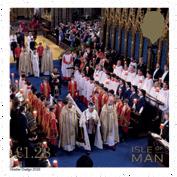





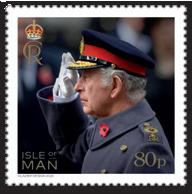



Check this box for a free gift when you spend over £30
TOTAL (Including Free Worldwide Delivery)
If this is your first order with Isle of Man Stamps & Coins we would appreciate if you could complete the information below. We would like to keep in touch with you to make sure that you stay informed and up-to-date on all of our news, products and promotions. You are free to change your mind at any time which you can do so by contacting the customer service team or ticking the box below and returning to us.
Please tick below to let us know how you would like us to contact you:
Please let us know which of the following you would like to receive from us: News and product information Special offers and promotions
If you no longer wish to receive our marketing material, please tick this box. This in no way affects our ability to fulfil any orders.
NO. PAYMENT
PLEASE USE YOUR CUSTOMER No. C NAME ADDRESS POSTCODE E-MAIL
PAYMENT BY (PLEASE TICK)
CHEQUE PAYABLE TO IOM POST OFFICE
DEBIT MY CREDIT/DEBIT CARD WITH THE ABOVE AMOUNT
ISSUE No. CARD No.
Please include security digits EXPIRY DATE START DATE DEDUCT FROM DEPOSIT ACCOUNT DIRECT DEBIT PAYMENT OF £ *
PLEASE NOTE: All payments to be made in sterling and will be taken on receipt of your order. Isle of Man Stamps and Coins will receive the full sterling value / equivalent of the value of the order for funds that are sent to us by bank transfer. Please quote your philatelic account number on all correspondence. Thank you.
Isle of Man Stamps & Coins, Isle of Man Post Office, PO Box 10M, Douglas, ISLE OF MAN, British Isles, IM99 1PB Telephone: +44 (0)1624 698430. Opening hours Mon - Fri 9am - 4:45pm
Isle of Man Stamps and Coins reserves the right to limit the supply of all product lines should the occasion arise where demand exceeds supply. The decision and allocation of available stock rests solely with Isle of Man Stamps and Coins.
Privacy Notice: Our privacy notice is available to view at www.iompost.com/privacy. Should you have any queries please contact the Isle of Man Post Office’s Data Protection Officer on +44 (0)1624 698485 or dpo@iompost.com.